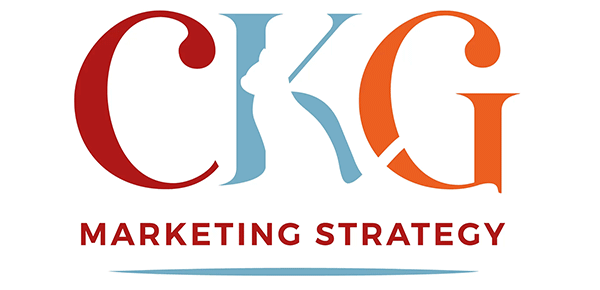What is a Marketing Strategy?
Your marketing strategy is the big-picture plan for achieving your marketing-related business goals. It is different from a marketing campaign or marketing tactic, as these are the specific tasks to be carried out in order to achieve the goals of the strategy.
A marketing strategy starts with market research and takes into consideration a number of factors relating to your business to define the path forward to reach your objectives.
You use your marketing strategy to decide what tactics to use, so it’s important to spend the time on it at the beginning in order to make more informed decisions later on.
Although a lot of work can go into creating a marketing strategy, the outcome should be a document that is simple and easy to understand. You’ll want to revisit your marketing strategy at least annually as things always change, but once you have your strategy in place for the year, it is your campaigns and tactics that you focus on a regular basis.
What you need in order to create an effective marketing strategy
There are some key elements that need to be researched and understood before you can put together an effective marketing strategy. Without these, your marketing efforts will be like trying to drive with your eyes closed.
What you should know in order to put together an effective marketing strategy:
Your marketing goals
What is it you want to achieve in your marketing? Are you reaching towards a financial goal, or are you after better brand awareness? Are you looking to be a thought leader in your industry, or increase customer value? Where is it you want to end up at the end of your marketing? Write up your goals as SMART goals to have a better chance of achieving them.
Your target audience
Who are you selling to? What do they want from your type of product or service? Where do they spend their time? What are they willing to pay? What are their expectations?
Understanding your target audience means that your marketing is more targeted to the people who will benefit the most from your help. These are the people who are most likely to buy from you, too, so it’s important to have a good grasp on who they are.
The marketing mix
You need to know what you’re marketing, where it’ll be sold, the price, and the promotion tactics or channels your business uses or is looking to use. Together, these are known as the 4Ps of marketing – Product, Price, Place, and Promotion.
At this stage, you don’t need to have a lot of detail. For example, it might be as simple as:
Product:
Product X that helps people with Y.
Price:
Product X sells for between £100-£300, which allows us to offer entry-level and premium versions.
Place:
Available on the website only.
Promotion:
Product X is promoted through email and social media marketing.
This broad overview can then be used to create marketing strategies down the line.
Your marketing budget
This is a must-have. It doesn’t matter what size your budget is, but you must set one that is realistic for your business.
A quote we love is Henry Ford’s “Stopping advertising to save money is like stopping your watch to save time”. Without marketing your business you have no business, because if no one is buying, all you have is an expensive hobby.
The size of your budget will influence the marketing you do, but even if you can only start with something small, start with something. You can always build on it as your business grows, but you must invest in your business first.
Competitive analysis
If you understand who your competition are and how they are currently faring in their marketing, you can see how your own efforts are working to draw your ideal client base.
Look at where they are showing up online and the response they have. What is their SEO like? What marketing channels are they using? What is the quality of their content? How many followers and how much engagement are they getting?
You’re not looking to copy your competition’s marketing, as this just sets you up as a follower, not a leader in your field. Competitive analysis allows you to see what’s already working or not, or if there are any trends or insights you can glean from the content that is already out there.
Analysing external factors that could impact your business is also a must. You can do that through PEST analysis.
Your business values and vision
Arguably one of the most important things to take into account are your own business values and the vision you have for the business.
Your business values will underlie all decisions you make regarding your business, from the messaging to service and everything in between, so make sure you know what they are. They are essential in creating a recognisable brand and for building a loyal following, because when they are consistent in both your words and actions, people believe in you.
Your vision for the type of business you want to run is also crucial. We often tell people that you need to love what you do before anything else, because what you don’t want is a business that you dread going to work in every day. Customers come and go, but you will remain; what do you want to build?
Key Performance Indicators
Finally, you’ll need to know how you’re going to measure the effectiveness of your marketing. How will you know if you’re reaching your goals? The key performance indicators (KPIs) you use will depend on the goals you set as they must align with the results you wish to see, but as examples, you may wish to track conversion rate, or cost per acquisition.
Putting it together
Once you have gathered all the information, putting it together in one easy-to-read document is the next step.
Analyse the data you have collected and write out in bullet format the main points from each section. For example, you may have found that your email marketing is lacking and that you could use nurturing campaigns to improve that. In which case, you would state that as:
- Nurturing campaigns: Breaking down the different areas of interest, so consumers can subscribe and get only what they are interested in, or a full mix.
Example breakdown:
- Meditation and mindfulness
- Healthy eating
- Yoga
- Full mix
The document you create should be easy to digest and lay out a top-level overview of the direction your marketing will take over the course of the following year. Use it to design your marketing campaigns and decide on marketing tactics that you can carry out to build on your current marketing.
If you need help creating your marketing strategy, please get in touch with Cat on: cat@ckgmarketing.co.uk






